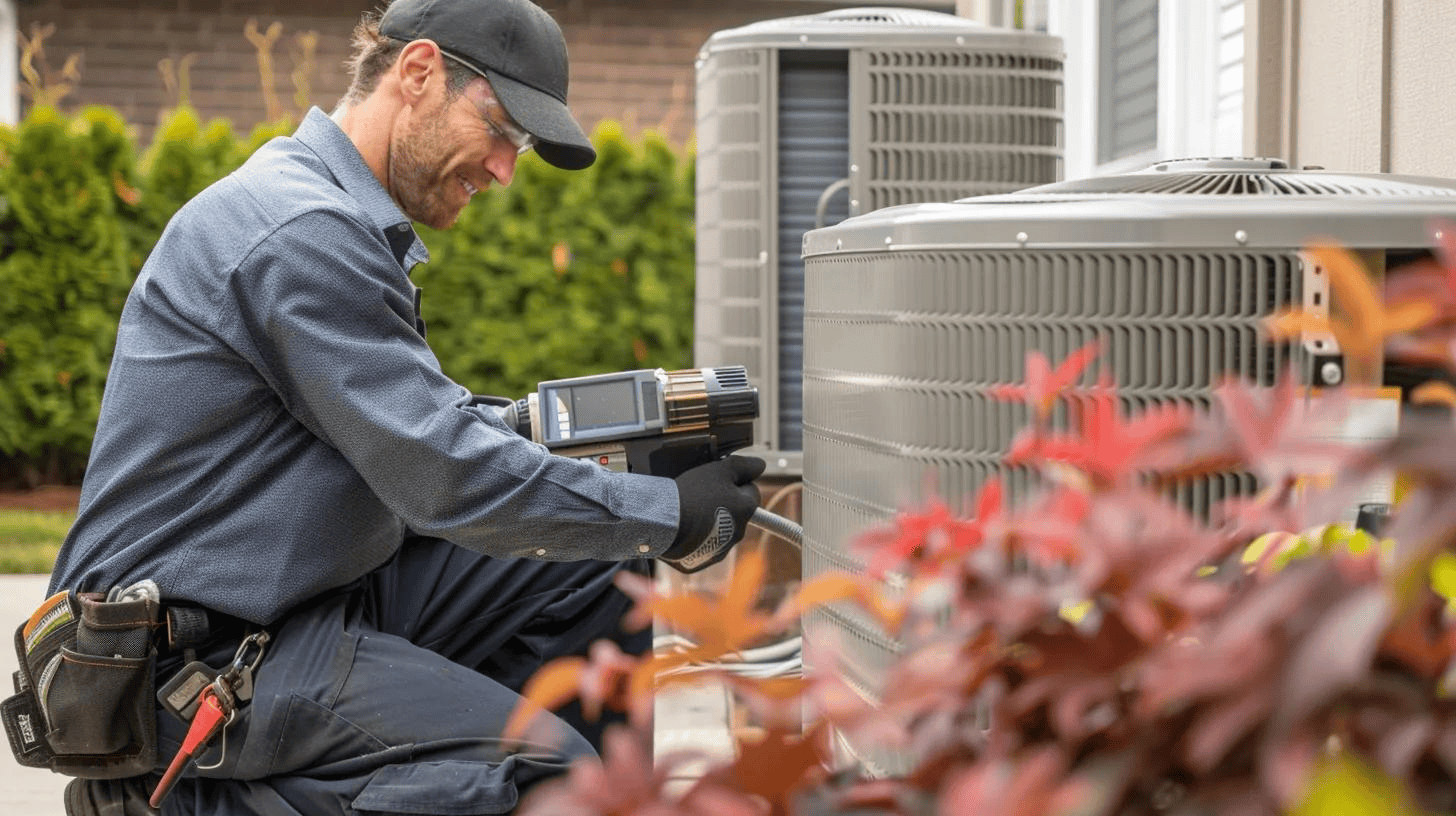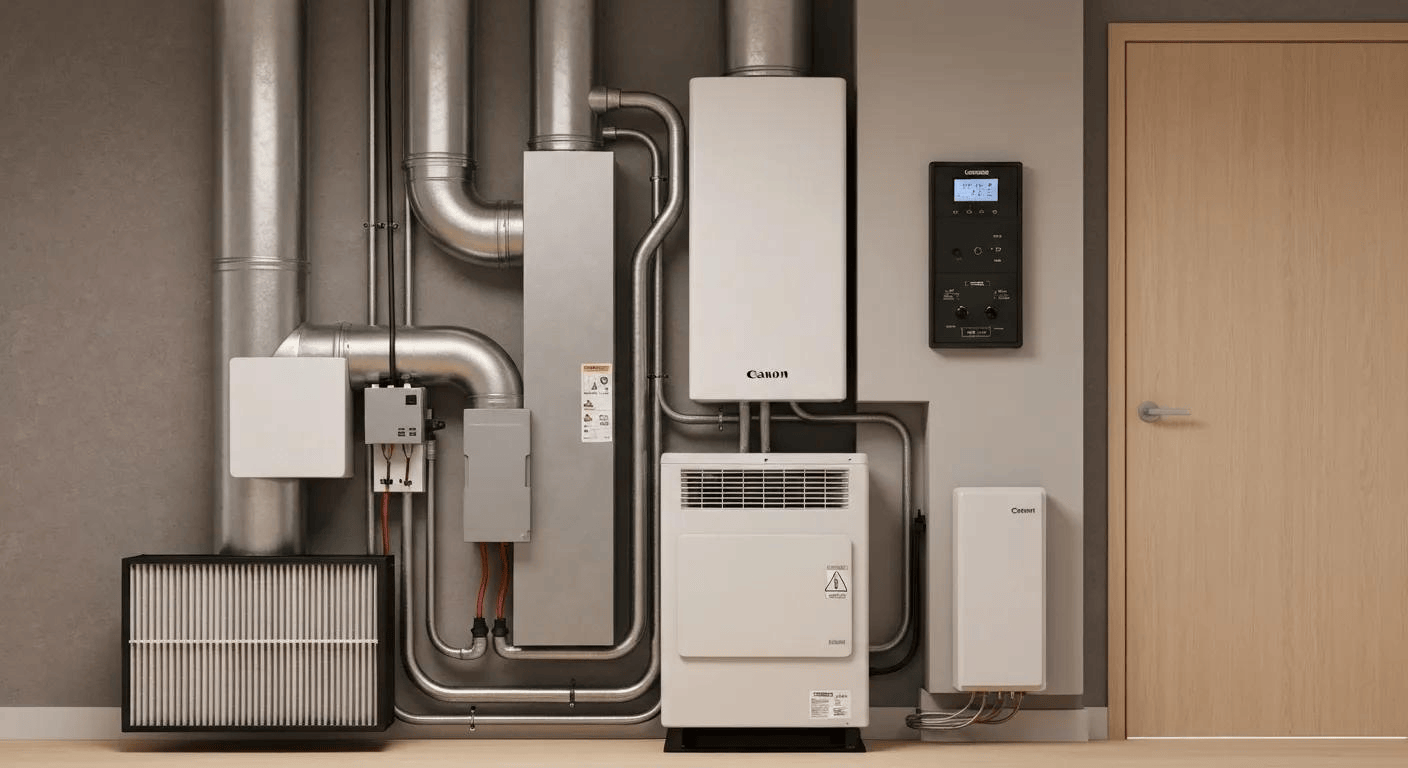Ensure Healthy, Comfortable Air in Your Airtight Home
Modern homes are built with incredible precision, focusing on energy efficiency through superior insulation and air sealing. This airtight construction is excellent for keeping conditioned air in and drafts out, leading to lower energy bills and more consistent temperatures. However, this very efficiency can inadvertently create a new challenge: poor indoor air quality.
Without controlled ventilation, the air inside your tightly sealed home can become stale and accumulate pollutants, leading to discomfort and potential health issues. Natural air leakage, often called "通风 (infiltration)", is insufficient and unpredictable in an airtight structure. Simply opening windows offers temporary relief but is impractical for year-round comfort, security, and energy savings. This is where dedicated airtight home ventilation solutions become essential.
The Challenges of Living in a Tightly Sealed Home
While the goal of airtight construction is to save energy, neglecting proper ventilation can lead to a range of problems:
- Poor Indoor Air Quality (IAQ): As fresh air exchange is limited, indoor pollutants can build up. These include volatile organic compounds (VOCs) from building materials, furniture, and cleaning products, carbon dioxide (CO2) from occupants, pet dander, dust mites, mold spores, and even outdoor pollutants like pollen that find their way inside. Lingering odors from cooking or other household activities can also become noticeable.
- Excess Moisture and Humidity: Everyday activities like cooking, showering, and even breathing generate moisture. In an airtight home without ventilation, this moisture can't easily escape. High indoor humidity levels contribute to stuffiness, discomfort, condensation on windows and walls, and create an ideal environment for mold and mildew growth. Mold can damage your home's structure and pose significant health risks.
- Stale or Stuffy Air: The lack of constant fresh air exchange makes the air feel stagnant and stuffy, impacting comfort and potentially causing headaches or fatigue.
- Potential Health Impacts: Prolonged exposure to indoor pollutants and mold can exacerbate respiratory conditions, allergies, asthma, and contribute to other health issues.
These problems highlight that while airtightness is beneficial for energy, it must be paired with a mechanical ventilation strategy to ensure a healthy and comfortable living environment.
Why Natural Ventilation Isn't Enough
Traditional homes relied on natural ventilation through cracks, gaps, and open windows. In a highly sealed home, this uncontrolled air leakage is drastically reduced. While opening windows provides fresh air, it's not a consistent or energy-efficient solution. In winter, it lets cold air in and warm air out; in summer, it does the reverse, wasting the energy you use to heat or cool your home. It also allows unfiltered outdoor air, including pollutants and humidity, directly inside.
Mechanical ventilation systems offer a controlled and energy-efficient way to introduce fresh outdoor air and exhaust stale indoor air without sacrificing the energy benefits of airtight construction.
The Solution: Balanced Mechanical Ventilation
The most effective way to ventilate an airtight home is with a balanced mechanical ventilation system. These systems use fans to simultaneously bring in fresh outdoor air and exhaust equal amounts of stale indoor air. This creates positive control over airflow, ensuring consistent air exchange throughout the home.
Two common types of balanced mechanical ventilation systems are Heat Recovery Ventilators (HRVs) and Energy Recovery Ventilators (ERVs).
Heat Recovery Ventilators (HRVs)
An HRV works by transferring heat from the warmer airstream to the colder airstream. In winter, it captures heat from the outgoing stale indoor air and uses it to preheat the incoming fresh cold outdoor air. This reduces the energy needed to bring the fresh air up to your home's temperature. In summer, it works in reverse, transferring heat from the warmer incoming outdoor air to the cooler outgoing indoor air, pre-cooling the fresh air. HRVs primarily manage heat transfer.
Energy Recovery Ventilators (ERVs)
An ERV performs heat transfer similarly to an HRV but also transfers moisture. In winter, it transfers heat and some humidity from the outgoing indoor air to the incoming fresh outdoor air. This helps prevent the indoor air from becoming excessively dry, which can be a problem in colder climates. In summer, an ERV transfers heat and humidity from the incoming humid outdoor air to the cooler, drier outgoing indoor air, helping to dehumidify the incoming fresh air before it enters your living space.
Choosing the Right System for Your Home
The choice between an HRV and an ERV often depends on your climate and specific needs. For homes in climates with distinct heating and cooling seasons, both systems offer energy benefits. However, in areas like Virginia, which experience warm, humid summers and cold winters, an Energy Recovery Ventilator (ERV) is often the preferred choice. By transferring both heat and moisture, an ERV helps manage indoor humidity levels year-round, making the air more comfortable in summer and preventing it from becoming too dry in winter. It's particularly effective at reducing the load on your Air Conditioning system during humid summer months by pre-dehumidifying incoming air.
A professional assessment is crucial to determine the optimal ventilation strategy and system size for your specific home and family needs.
The Benefits of Professional Airtight Home Ventilation Installation
Installing a properly sized and balanced ventilation system offers numerous benefits for your home and family:
- Consistently Fresh, Healthy Air: Enjoy a continuous supply of filtered outdoor air, reducing the concentration of indoor pollutants and ensuring a healthier environment.
- Effective Moisture Control: Prevent excessive humidity, condensation, and the risk of mold growth, protecting your home's structure and your family's health.
- Improved Comfort: Eliminate stuffiness, lingering odors, and uneven temperatures caused by poor air circulation. The air just feels better to breathe.
- Energy Efficiency: HRVs and ERVs recover energy from the outgoing air, minimizing the energy penalty associated with ventilation compared to simply opening windows or relying on uncontrolled infiltration. This complements your existing Heating and Air Conditioning systems.
- Quiet Operation: Properly installed systems are designed to operate quietly, integrating seamlessly with your home's HVAC system.
- Protection for Your Home: Managing moisture and pollutants helps preserve the integrity of your home's building materials and finishes.
Our Airtight Home Ventilation Services
Ensuring your airtight home has the correct ventilation system requires expertise in building science and HVAC design. At Woods Family Heating & Air Conditioning, we provide comprehensive solutions tailored to tightly sealed homes. Our services include:
- Home Assessment & Consultation: We evaluate your home's structure, size, number of occupants, and any existing IAQ concerns to determine the specific ventilation needs. This may involve tests like a blower door test to measure airtightness accurately.
- System Design & Recommendation: Based on the assessment, we design a custom ventilation plan and recommend the most appropriate system, such as an HRV or ERV, sized correctly for your home's volume and occupancy.
- Professional Installation: Our licensed and insured technicians handle the entire installation process with precision and care, ensuring the system is properly integrated with your existing ductwork (if applicable) and controls, and balanced for optimal performance.
- System Maintenance & Support: Like any HVAC equipment, ventilation systems require regular maintenance to operate efficiently and effectively. We offer maintenance services to keep your system running smoothly and can discuss incorporating it into a comprehensive Maintenance Plan.
We understand that investing in a ventilation system is a significant decision. We are happy to discuss your options and explain the process thoroughly. Financing options may be available to help make these important IAQ upgrades accessible.
Trust Woods Family for Your Ventilation Needs
For over 50 years, the Woods Family has been dedicated to ensuring the comfort and health of families in Western Virginia. Our commitment to quality workmanship, honest service, and putting our customers first is the foundation of our business. We bring generations of experience to every project, including the complexities of modern, energy-efficient homes and the critical role of proper ventilation.
We are deeply familiar with the climate challenges in areas like Roanoke, Salem, Vinton, and surrounding Service Areas, understanding how humidity and seasonal temperature swings impact the need for controlled ventilation. When you choose Woods Family Heating & Air Conditioning, you're choosing a partner who cares about the air you breathe and the long-term health of your home.
We believe in transparency and providing solutions that truly solve your indoor air quality and comfort problems. Our goal is to help your family breathe easier and live more comfortably in your energy-efficient home.








